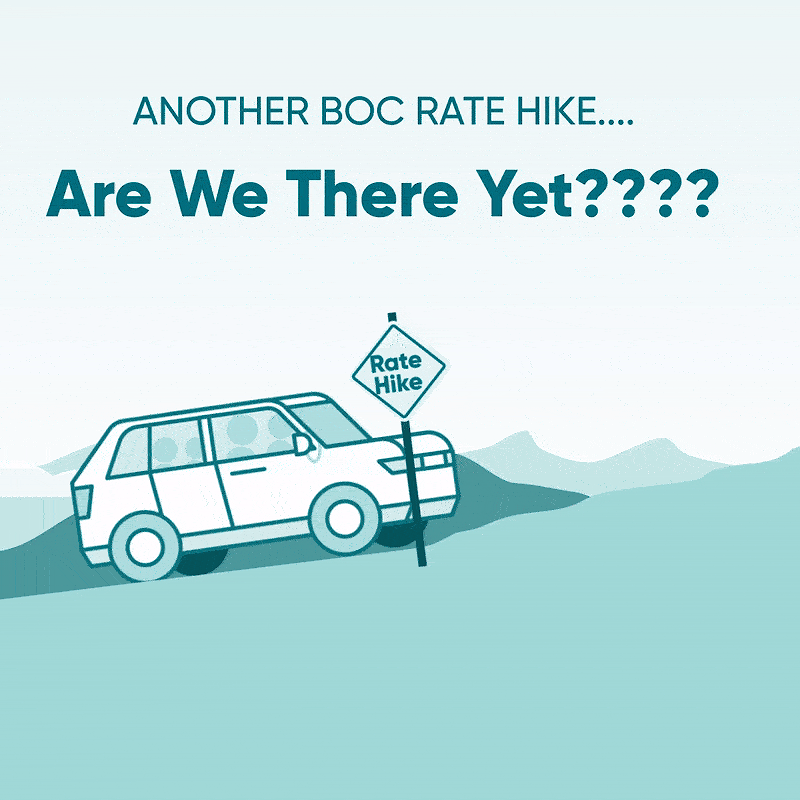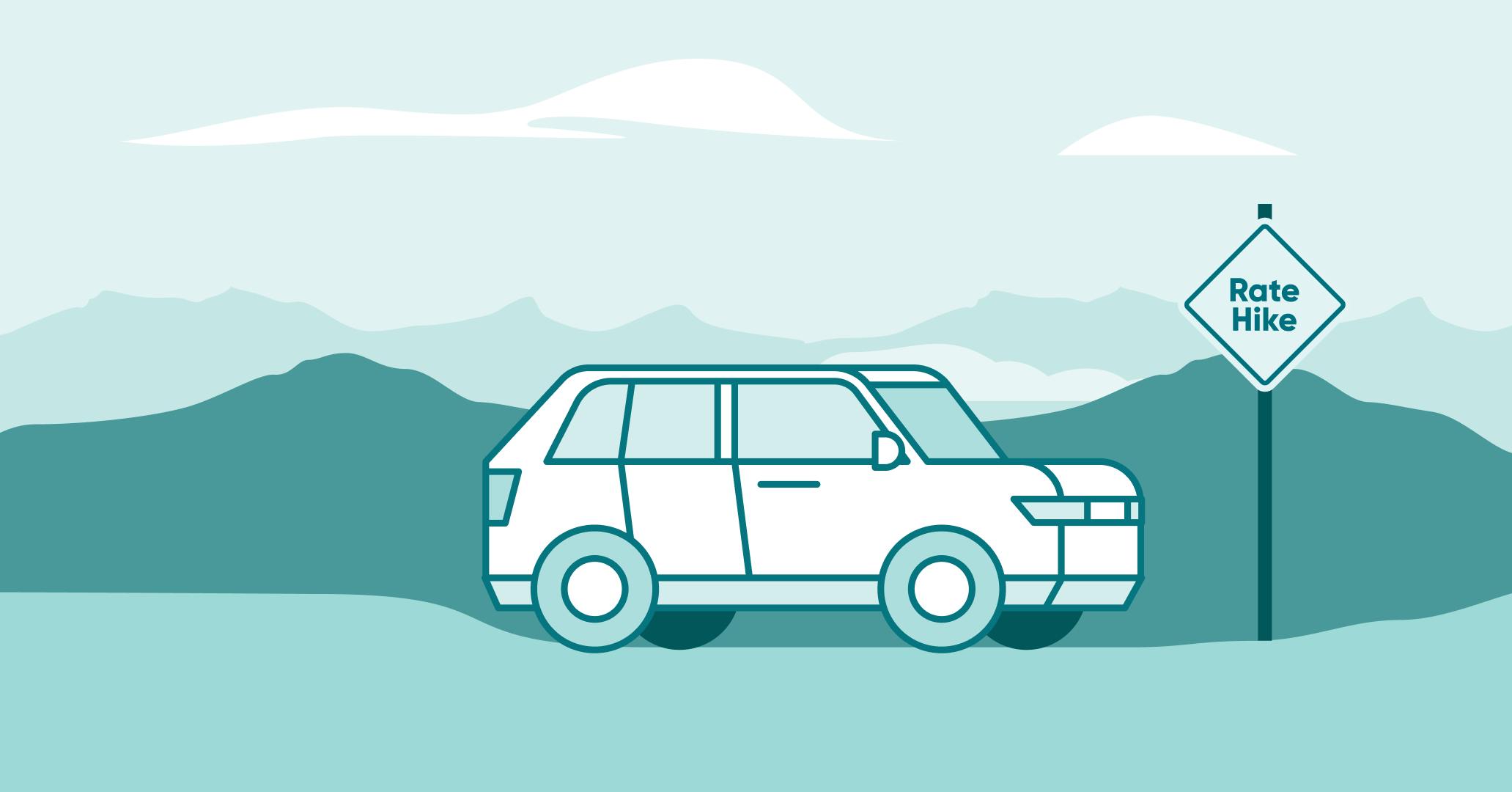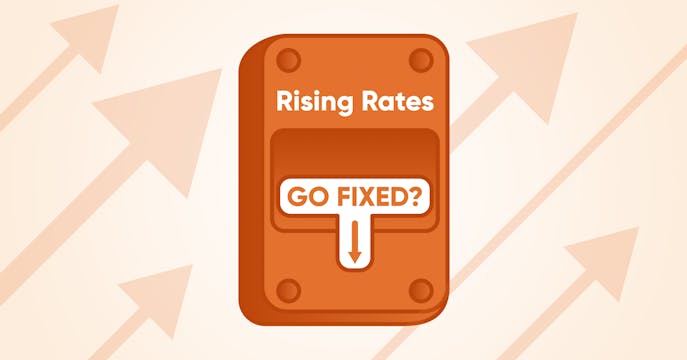Another BoC hike. Are we there yet?
Bank of Canada adds another 0.75% onto our rate-hike route.
That drives its benchmark rate to 3.25% — just past the 'neutral rate' destination at which many believed the central bank might roll to a stop. What (again) does this latest hike mean for your mortgage?

It's easy to feel a backseat 'whine' coming on with this one.
We feel like we've been in this 'rate-hike' car for a while. It's actually only been a few months since the first increase started on March 2, when the benchmark rate sat at 0.25%. But with so many large rate hikes so quickly, we're looking to get out of the car and stretch our legs a little (or a lot).
Since March 2, the central bank has raised its benchmark rate a full 3.0%. After today, lender prime rates will (likely) rise to 5.45% from 4.70%.
Note: Lender discounts off of prime can bring your variable mortgage rate lower.
Will the BoC hold now?
Possibly. Maybe. 🤞 Inflation is still high, but down from its June 2022 peak. Some prices, like for gas, have eased. House prices are cooling in the larger markets, like Toronto and Vancouver. Home sales are tempering with less robust demand — tapping the brakes on the market insanity that brought intense bidding wars and no-conditions offers.
But, Tiff Macklem recently reaffirmed the importance of staying the course:
“It’s by raising borrowing costs in the short term that we will bring inflation down for the long term. This will ultimately be better for everyone because high inflation hurts us all. It eats away at our purchasing power and makes it difficult to plan our spending and saving decisions.”
– Tiff Macklem, Governor of the Bank of Canada
Our own 2022 Rate Forecast mused that the neutral range would top out at around the 3.0% mark. This latest monster hike of 0.75% pushes over into 'restrictive' rate territory. Many experts are calling for the central bank to 'rest and hold' its benchmark rate here, at 3.25%, to help avert a more damaging recession in the months ahead.
Dan Eisner, True North Mortgage Founder and CEO, agrees: "I think the Bank of Canada will wait for more data before making another move."
Fact: The BoC has two more rate meetings in 2022: on Oct. 26 and Dec. 7.
Your variable rate mortgage payments are about to go up (again).
With your Adjustable-Rate Mortgage (ARM), your floating payments will float higher in your next full payment cycle.
For example, on a $500,000 mortgage, if you have our current lowest variable rate of 3.50% through our in-house lender, THINK Financial, your rate will now be 4.25%, which means an extra $200 per month to soak up.
What's all this talk about a trigger rate?
Are you with a big bank and have static payments with your variable rate? This product, called a Variable-Rate Mortgage (VRM), comes with a trigger rate and trigger point — meaning if you hit these points as rates go up, your 'fixed' payment won't be enough to cover interest or put anything down on your mortgage principal. You'll need to adjust your payment upwards or take other action as outlined by your lender.
Long before your trigger rate, however, increasing rates may also quickly increase your amortization — as more of your static payment goes towards interest instead of principal.
One of the big 6 banks recently surmised that about 80,000 of its variable-rate mortgage clients would reach their trigger with the next "couple of" Bank of Canada rate hikes (Stueve Huebl, August 24, 2022).
It's important to know your trigger rate and how it can affect your monthly payments and mortgage goals. If you don't know yours, give us a shout, and we'll help you figure out your best action plan to stay on track.
Are variable rates still popular?
Despite the BoC's recent rate hikes, our clients are still interested in a variable rate over a fixed rate — in this past week alone, 56% of our clients chose a variable. Before the pandemic, the fixed rate was the more popular choice (around 60%, with variables selected about 30% of the time).
Dan partially attributes the continued popularity to home buyers wanting to use a lower variable rate vs fixed rate to qualify for more 'home' with the government stress test requirement. This test means that to be approved by a lender, you have to be able to afford the payments at 2.0% more than your actual rate (if your rate is lower, you can qualify using a lower stress-test rate).
Will this latest hike dampen the variable enthusiasm? For the stress test, it might. Dan explains, "as the Bank of Canada raises its rate again, the spread with a 5-year fixed rate may narrow even more, making the variable a less attractive choice just for a lower stress test qualification."
"Yet it's also possible," Dan posits, "that many are thinking that the variable rate — now that it's been hiked and hiked — has the potential to come down in their 5-year term and will offer a rate break at some point." After all, breaking a fixed-rate mortgage can incur higher penalties if rates come down and a client wants to switch to a lower rate before their renewal.
Will fixed rates go up, too?
Bond yields hit a peak in mid-June after the BoC's 1.0% hike on June 1. Fixed rates are influenced by government 5-year bond yields, which can rise and fall in anticipation of central bank rate decisions and other economic pressures.
Since that peak, bond yields and fixed rates have eased a little. After today, fixed rates may go up again slightly, but for the most part, they have already priced in today's rate resting point.
That can change if central bank sentiment doesn't ease up on inflation warnings and looks to hike its rate again.
Time for a break? We're your 5-star (mortgage) pitstop.
Worried about these latest increases, need budget help or want to save on interest costs? Talk to us to tune up your mortgage goals. Our highly trained brokers can suggest ways to save and find the right strategies to pay down your mortgage faster.
Of course, getting your best rate in the first place is a great way to start.



